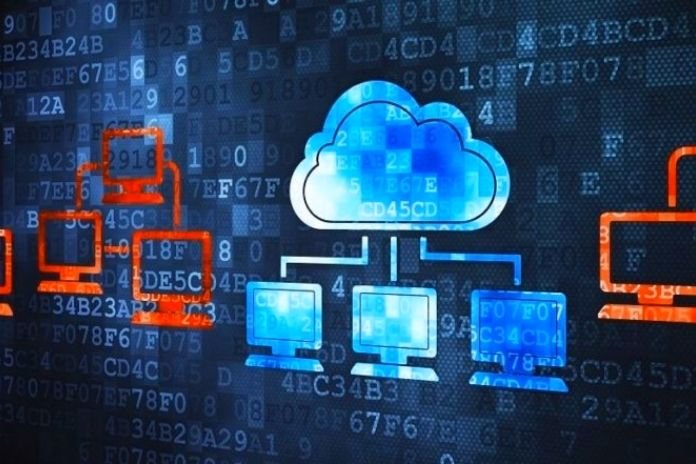Best Practices For Cloud Monitoring
Best Practices For Cloud: How to know if the cloud structure is secure? To avoid data leakage or reduce losses from data loss, it is clear how much companies should pay attention to best practices for cloud monitoring.
You’re mistaken if you believe that monitoring the infrastructure is enough to know the basic network tools. The field covered is quite broad and, among its features, we can mention as an example:
- detect operating system or virtualization related failures ;
- problems in the flow of data or programs;
- network design problems.
In this way, when carrying out the practices, the IT support team can obtain reports to improve decision-making, whether for process improvements or to resolve critical failures.
We know how essential it is to keep its data safe. With the technological advancements, cybercriminals seek, every day, to improve their invasion practices. For this reason, even the most basic precautions, such as prohibiting access to suspicious links, are no longer enough to prevent a hacker attack. To avoid problems, below are some practices to monitor the cloud efficiently. Follow up!
Detect Failures In Real-Time
To keep the company going, it is natural that some activities need to be active for 24 hours. The problem is that, at any time, the system can fail and open up opportunities for malicious people to take action. For this reason, you must have systems that notify incidents at any time of the day. By creating routines, IT professionals can anticipate and correct complications as they arise.
Invest In Security
Because it is a recent technology, some entrepreneurs may be afraid to use cloud technology. The process, however, is quite safe and efficient, as long as a serious company hires it. However, like any technological resource (including the older ones), it is necessary to invest in security to keep the environment protected. For the exchange of information between devices to be secure, use encryption.
Encryption, in short, is protection created by an algorithm that makes it impossible to read data immediately, allowing only authorized or proprietary people to decrypt information in transit. Therefore, consider an HTTPS security protocol in data communication. Another point to note is related to the loss of information. Whether due to a system failure or a hacker attack, it is a fact that what is stored in the cloud can be compromised. One way to get around the situation is to rely on automatic server backups. That way, even if important data is lost, the damage can be reduced if there is a backup.
Pay Attention To Critical Points
To maintain the company’s safety, it is necessary to define the strategic areas that must be monitored frequently – among them, we can mention:
- Software and hardware: the focus should be on operating systems and servers. Among the activities, it should measure: response time, performance, availability, and installed versions;
- Database: as it contains company information, it is necessary to have constant availability. If it is unavailable or does not have a backup, the company may suffer financial losses;
- Network infrastructure: responsible for operations, the support team, must have the network design in hand. So, if there is a problem, you will know at which points you should act with priority, such as routers, switches, and Internet links.
Create An Information Security Policy
One of the principles for keeping enterprise data safe is to recommend that employees do the basics:
- Do not access suspicious links.
- Do not connect personal devices to company machines.
- Open suspicious emails in the inbox.
The issue is that the message is not always effective and, thus, the employees ignore the recommendations. For this reason, adopting and maintaining a Security Policy can reduce the number of incidents. But how is the process done?
The best way to show it is to educate users. By teaching them good safety practices (as mentioned above) explaining their risks and their responsibilities, you will keep them aware of the problems they can cause if they don’t respect the rules. The company must train the support team to keep the work environment safe and stable to support the process.
Control The Flow Of Data
There is a lot of movement between servers and the company’s machines during working hours. Depending on the area of activity, professionals can freely access the Internet, whether seeking some information or serving clients. Thus, the user will be more likely to find an infected file. By using a good firewall, computers will be safer against simpler threats.
Another point to note is related to computer authentication. Because they contain confidential information, some machines should only be used by authorized professionals. Therefore, a good practice to avoid problems is not to share login data with other employees.
Check The Suppliers
When hiring a cloud provider, the manager must be aware of the reputation of the company to be engaged. In addition to the services provided, you should note what types of security are used, how the backup process is performed, and what recovery protocols are used in case files are lost. Cloud solutions have shown that the trend is to migrate to the new platform. Although the idea is different and causes distrust in people, the process is safe and efficient.
To ensure that data is not compromised, the manager must be aware of the best cloud monitoring practices mentioned in the article. The simplest processes, such as investing in encryption, keeping an eye on the company’s infrastructure, or using backup routines, allow you to have more peace of mind when using the new technology.
Also Read: Five Advantages Of Cloud Computing For Your Business
Share this content:












Post Comment